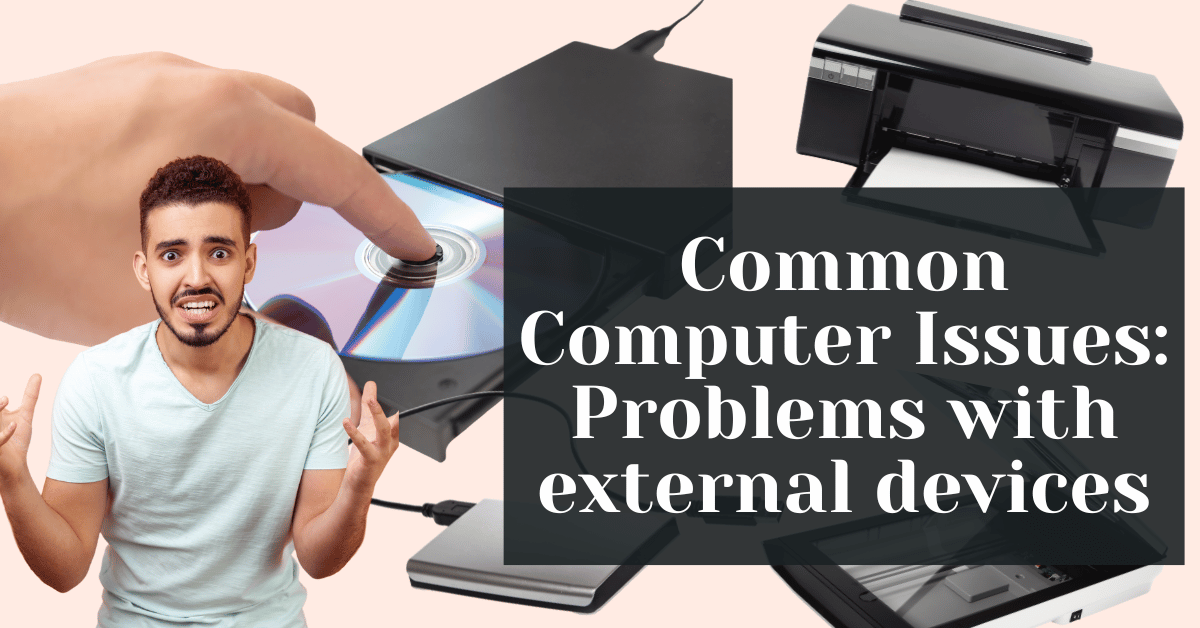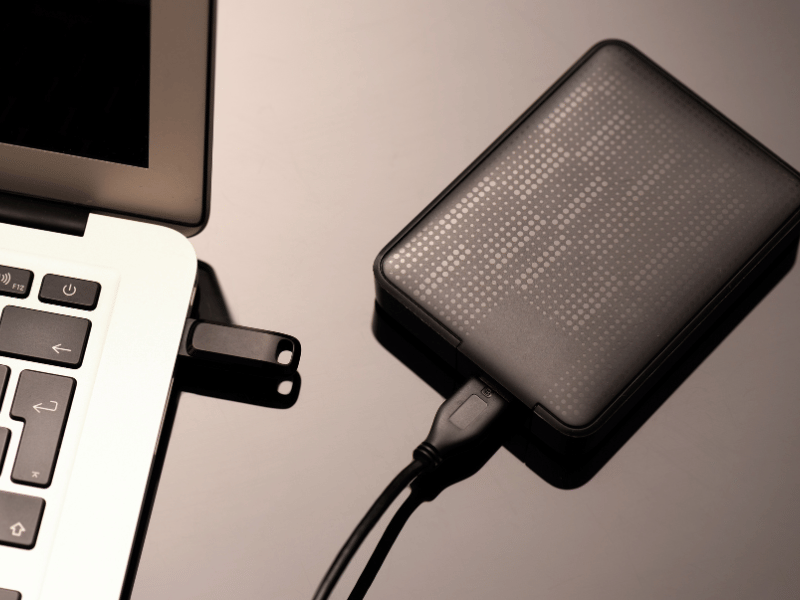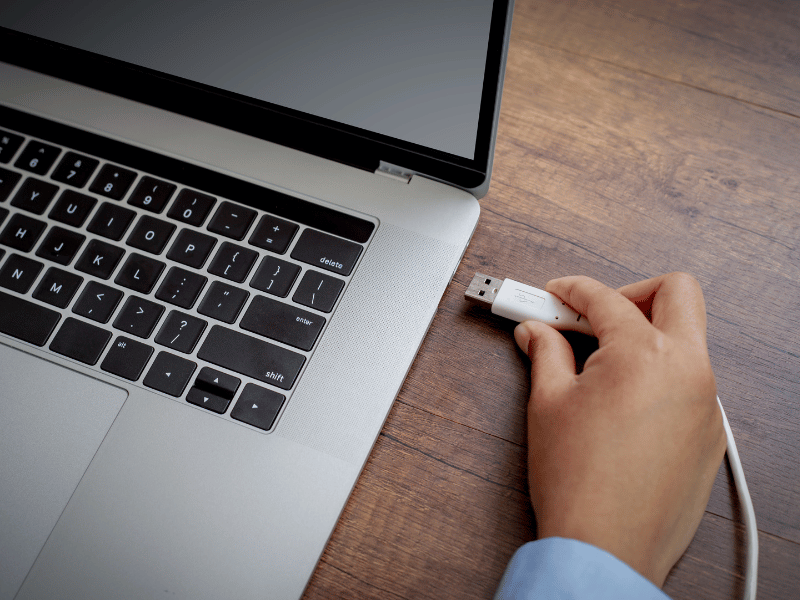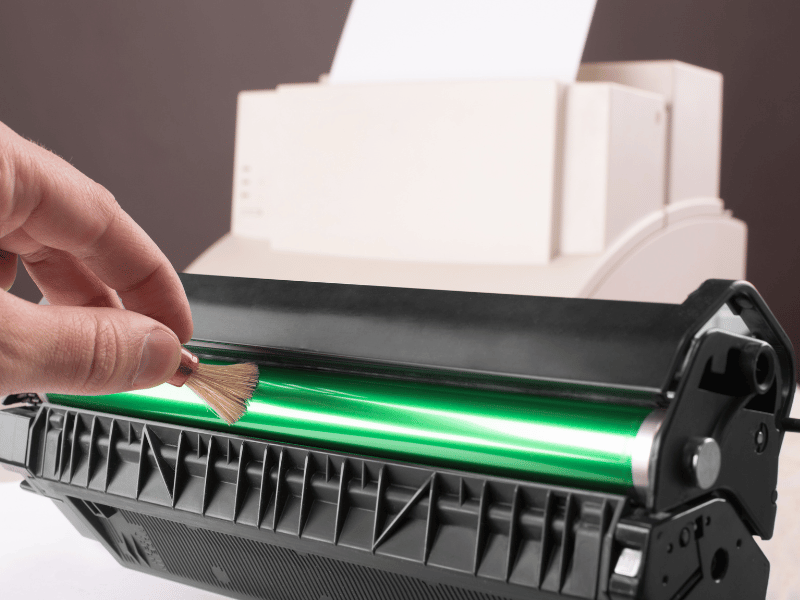Common Computer Issues: Problems with external devices like printers, scanners, or external hard drives.
In today’s digital age, external devices like printers, scanners, and external hard drives have become integral to our daily computing needs. Whether it’s for work, school, or personal use, these devices enhance our productivity and streamline our tasks. However, like any technology, they are not immune to issues. From connectivity problems to hardware malfunctions, users often face challenges that disrupt their workflow.
In this comprehensive guide, we will explore the common problems associated with external devices and provide insights into troubleshooting and preventive measures. By understanding the root causes and applying effective solutions, you can ensure a smoother and more efficient computing experience.
Understanding External Device Connectivity
Types of External Devices
External devices come in various forms, each serving a specific purpose:
- Printers: Essential for producing hard copies of documents, images, and more.
- Scanners: Used to digitize physical documents into electronic format.
- External Hard Drives: Provide additional storage capacity for data backup and transfer.
Common Connectivity Methods
These devices connect to computers using different methods, including:
- USB (Universal Serial Bus): The most common connection, offering simplicity and speed.
- Wireless (Bluetooth, Wi-Fi): Allows for cable-free connections, enhancing mobility and convenience.
- Network-connected: Devices connected to a local network, accessible by multiple users.
The Importance of Compatibility
When selecting external devices, it’s crucial to ensure compatibility with your computer’s operating system and hardware. This prevents connectivity issues and ensures optimal performance.
Computer Repair and Services
Free estimate. Same-day services – Safemode Computer Service
Common Problems with External Devices
Printer Issues
Printers are indispensable in both home and office settings, but they are prone to several issues:
- Paper jams: One of the most frustrating issues, often caused by misaligned paper or foreign objects.
- Connectivity problems: Printers may fail to connect to the computer or network, hindering printing tasks.
- Driver errors: Outdated or corrupted printer drivers can lead to communication breakdowns between the printer and the computer.
- Printing quality issues: Blurred or streaked prints can be caused by low ink levels, clogged print heads, or incorrect settings.
Scanner Problems
Scanners convert physical documents into digital format, but they can encounter issues such as:
- Connection failures: Similar to printers, scanners can experience difficulties connecting to the computer.
- Software compatibility: Incompatibility between the scanner software and the computer’s operating system can lead to functionality problems.
- Image quality issues: Poor scan quality can result from dirty scan beds, outdated software, or incorrect settings.
External Hard Drive Issues
External hard drives provide additional storage space but can face challenges:
- Detection problems: The computer may not recognize the hard drive due to connection issues or driver problems.
- Data transfer speed: slow data transfer can be caused by outdated USB ports, poor-quality cables, or hardware limitations.
- Drive formatting issues: Incorrect formatting can lead to incompatibility with the operating system, resulting in data access problems.
Troubleshooting External Device Issues
Basic Troubleshooting Steps
Before diving into more complex solutions, try these basic steps:
- Checking cables and connections: Ensure all cables are securely connected and free from damage.
- Restarting devices and computers: A simple reboot can often resolve temporary glitches.
- Updating drivers and software: Regularly check for and install updates to maintain compatibility and performance.
Advanced Troubleshooting
If basic steps don’t resolve the issue, consider these advanced methods:
- Network printer and scanner setup: Ensure the devices are correctly configured on the network, with appropriate IP addresses and sharing settings.
- External hard drive partitioning and formatting: Use disk management tools to partition and format the drive according to your needs, ensuring compatibility with your operating system.
- Resolving driver conflicts: Use the Device Manager to check for and resolve any conflicts between device drivers.
Utilizing Diagnostic Tools
Many manufacturers provide diagnostic software to help identify and fix issues with their devices. These tools can offer insights into hardware health and suggest appropriate fixes.
Preventive Measures and Best Practices
Regular Maintenance Tips
To avoid common issues with external devices, consider these maintenance tips:
- Cleaning and dusting: Regularly clean your devices to prevent dust buildup, which can lead to overheating and malfunctions.
- Regular software updates: Keep your device drivers and software up to date to ensure compatibility and security.
Choosing the Right External Devices
Selecting the right devices can prevent future problems:
- Compatibility with your computer system: Ensure the device is compatible with your operating system and hardware specifications.
- Reading reviews and user experiences: Research user reviews and ratings to gauge the reliability and performance of the device.
Educating Yourself and Your Team
Understanding how your external devices work and what they require can prevent many issues:
- Familiarize with the user manual: Knowing the ins and outs of your device can help you troubleshoot more effectively.
- Training: If you’re in a workplace setting, ensure that all team members are trained on proper device usage and maintenance.
How Safemode Computer Service Can Help
Expert Diagnosis and Repair
Safemode Computer Service offers professional assistance for a variety of external device issues:
- Professional assessment of the issue: Our technicians can quickly diagnose the problem and identify the best solution.
- Quick and efficient repair services: Whether it’s a hardware malfunction or software conflict, we provide timely repairs to get your devices back in working order.
Preventative Maintenance and Advice
Beyond repairs, Safemode Computer Service can help prevent future issues:
- Recommendations for avoiding future problems: We offer advice on best practices for device maintenance and usage.
- Tips for optimal device usage: Learn how to get the most out of your external devices with expert tips from our technicians.
Tailored Solutions for Your Needs
Every situation is unique, and we provide customized solutions to meet your specific requirements, ensuring your external devices operate smoothly and efficiently.
When to Seek Professional Help
Signs You Need Expert Assistance
Sometimes, DIY solutions are not enough. Here are signs that professional help is needed:
- Persistent error messages: If error messages continue despite troubleshooting, it might indicate deeper issues.
- Hardware failure symptoms: Unusual noises, overheating, or physical damage can signal the need for professional repair.
- Data recovery from external hard drives: If you’re unable to access important data, specialists can help with recovery efforts.
Finding Reliable Support
Choosing the right support is crucial for effective solutions:
- Manufacturer support channels: Start with the device’s manufacturer for specialized guidance.
- Local computer repair services: For immediate assistance, local experts like Safemode Computer Service can offer in-person support.
- Online technical forums and communities: These platforms can provide insights and solutions from experienced users and professionals.
Conclusion
Dealing with problems with external devices like printers, scanners, or external hard drives can be daunting. However, understanding common issues, employing basic troubleshooting steps, and applying preventive measures can greatly enhance your experience. For complex problems, don’t hesitate to seek professional help from services like Safemode Computer Service. By staying informed and proactive, you can ensure your external devices remain reliable and efficient components of your digital life.
Additional Resources
For further reading and assistance, consider these resources:
- Manufacturer Websites: Visit the official websites of your device manufacturers for troubleshooting guides, software updates, and support.
- Tech Forums (https://www.techsupportforum.com/): Engage with the community on Tech Support Forum for advice and solutions from experienced users.
- CNET (https://www.cnet.com/): Explore CNET for tech product reviews, news, and maintenance tips.
- Tom’s Hardware (https://www.tomshardware.com/): Check out Tom’s Hardware for in-depth articles, forums, and guides on computer hardware and peripherals.
- Safemode Computer Service (https://www.safemode.com.au/): Visit Safemode Computer Service for professional repair services and expert advice on external device issues.
Remember, the key to resolving and preventing issues with external devices lies in regular maintenance, staying informed, and knowing when to seek professional help.








